What is a Plasma Cutter?
A plasma cutter is a tool that cuts through electrically conductive materials using an accelerated jet of hot plasma. Ideal for cutting steel, stainless steel, aluminum, brass, and copper, it provides precision and efficiency.
How Plasma Cutters Work
- Ionization: The process begins by creating an electric arc between an electrode and the conductive material.
- Gas Flow: Compressed gas (often nitrogen, argon, or oxygen) is directed through the nozzle.
- Plasma Creation: The electric arc ionizes the gas, transforming it into plasma.
- Cutting Action: The plasma jet reaches temperatures up to 40,000°F, melting the material and blowing it away to create a clean cut.
Advantages of Plasma Cutting
- Speed: Faster than traditional methods.
- Precision: High accuracy and minimal waste.
- Versatility: Cuts through various metals regardless of hardness.
Plasma cutters are essential in industries like manufacturing, automotive repair, and metal fabrication for their efficiency and versatility.
What is a Plasma Cutter Used For?
A plasma cutter is a tool used for cutting through electrically conductive materials such as steel, stainless steel, aluminum, brass, and copper with high precision. It uses a high-velocity jet of ionized gas (plasma) to melt and expel material from the cut.
Key Uses of Plasma Cutters:
- Metal Fabrication: Cutting intricate shapes and designs in metal sheets.
- Automotive Repair: Cutting and shaping metal parts for vehicles.
- Construction: Cutting metal beams, pipes, and sheets on-site.
- Art and Sculpture: Creating detailed metal artwork and sculptures.
- Industrial Manufacturing: Streamlining the cutting process in large-scale production.
How Plasma Cutting Works:
- Ionization: A gas (often compressed air) is ionized to create plasma.
- Plasma Jet: The plasma jet is directed through a nozzle at the material.
- Melting: The intense heat melts the metal.
- Expulsion: The high-velocity jet blows the molten metal away, creating a clean cut.
Plasma cutters are essential in industries requiring precise and efficient metal cutting solutions.
What are the disadvantages of plasma cutting?
Plasma cutting, while efficient and precise, has notable disadvantages including high operational costs, limited material thickness capability, and potential for producing rough edges and heat-affected zones.
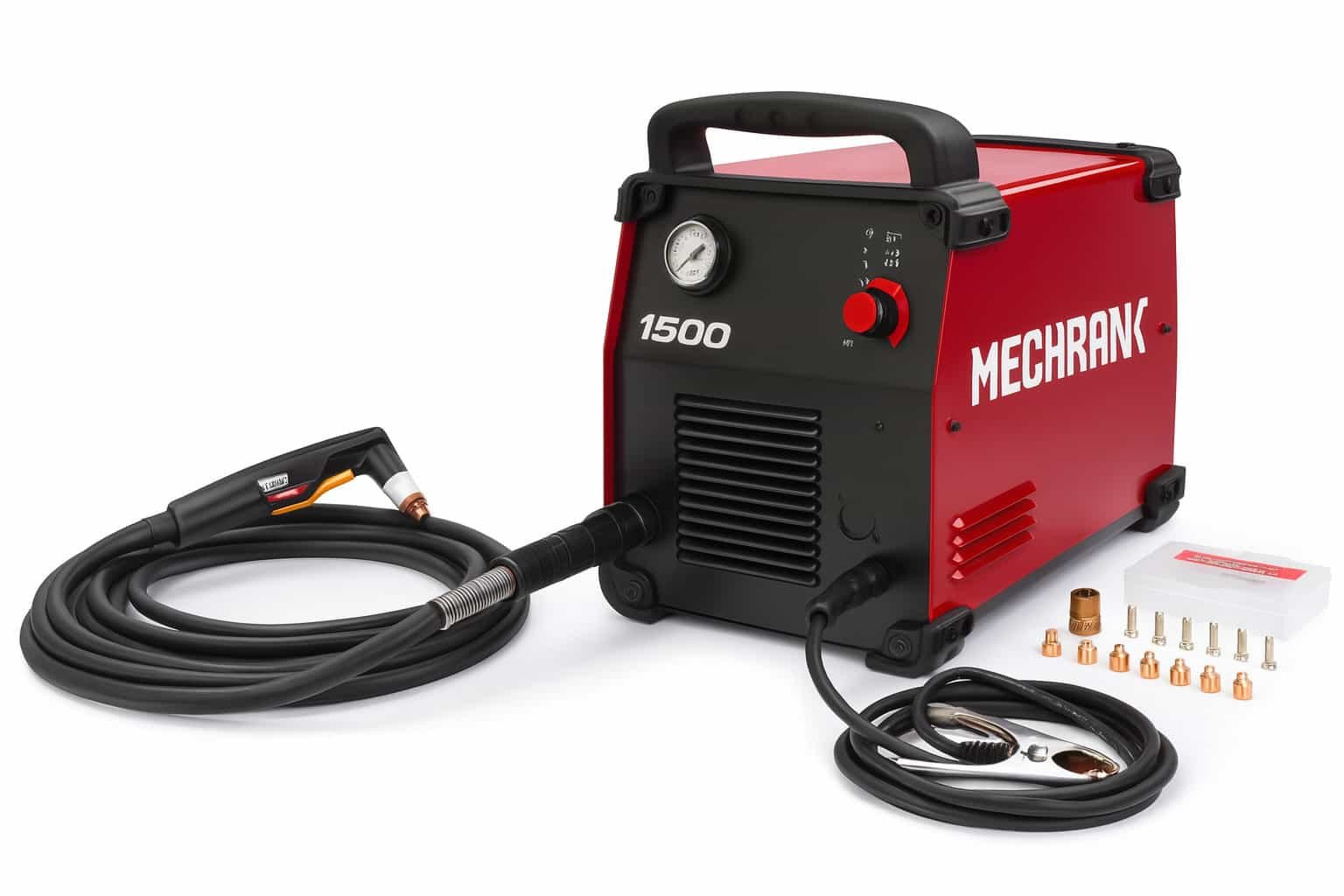
Key Disadvantages:
- Operational Costs: Plasma cutting systems are expensive to purchase and maintain. They require a continuous supply of consumables like electrodes and nozzles, driving up operational costs.
- Material Thickness: Plasma cutting is less effective for very thick materials. For thicknesses beyond a certain limit, other methods like oxy-fuel cutting might be more suitable.
- Edge Quality: The process can produce rough edges and dross (excess material), which often necessitates additional finishing work.
- Heat-Affected Zones: Plasma cutting generates significant heat, leading to heat-affected zones (HAZ) which can alter the material properties around the cut area.
- Noise and Fumes: The process is noisy and generates fumes, requiring proper ventilation and protective equipment for operators.
Understanding these disadvantages helps in making informed decisions about when and how to use plasma cutting effectively.
What Gas Do You Need for a Plasma Cutter?
For a plasma cutter, you primarily need compressed air. Compressed air is used because it’s readily available, cost-effective, and efficient for most cutting tasks. However, specific applications may require other gases.
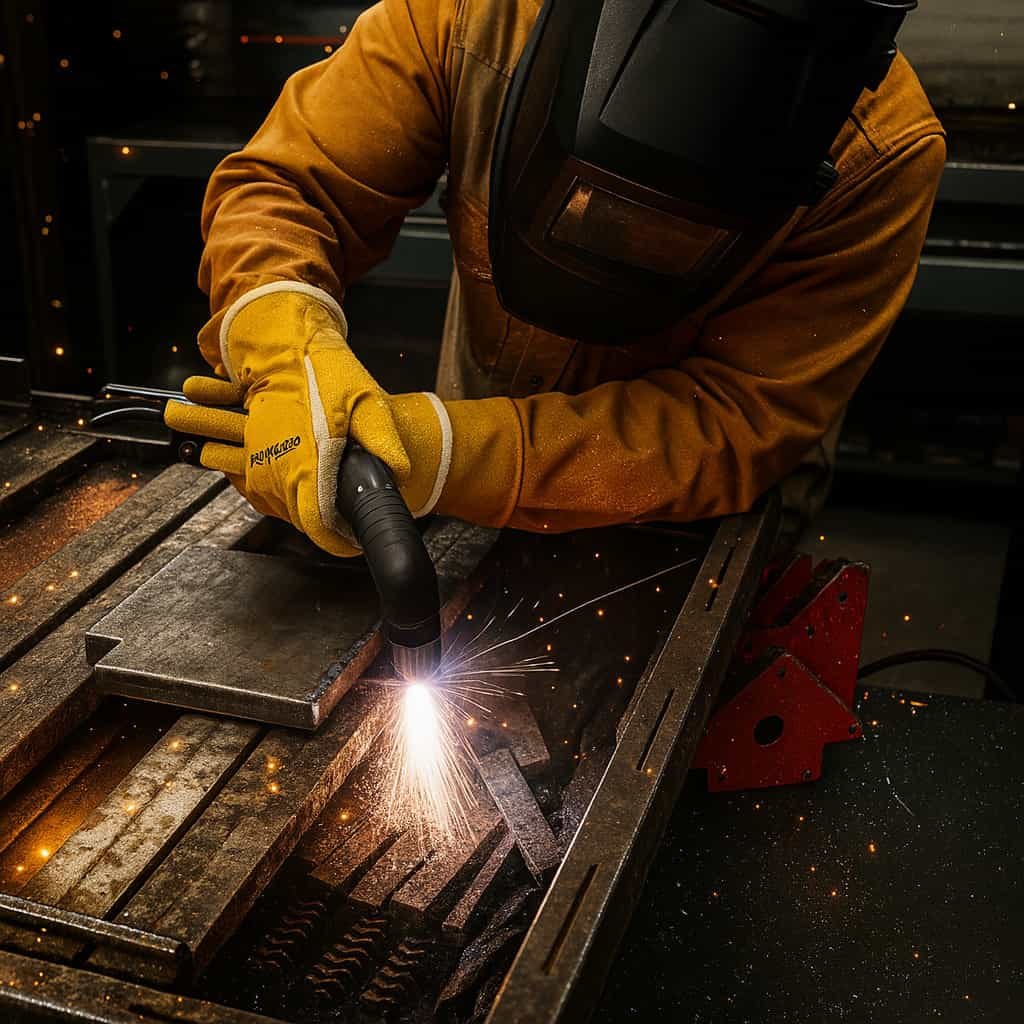
Common Gases for Plasma Cutting:
- Compressed Air: Ideal for mild steel, stainless steel, and aluminum.
- Nitrogen: Suitable for high-quality cuts on stainless steel and aluminum.
- Oxygen: Used for cutting thick mild steel, providing a faster cut.
- Argon-Hydrogen Mixture: Best for cutting thick stainless steel and aluminum, offering a clean cut.
Key Considerations:
- Cut Quality: Different gases affect the edge quality and speed.
- Material Type: Choose gas based on the material being cut.
- Cost: Compressed air is the most economical option.
By selecting the appropriate gas, you can optimize the performance and efficiency of your plasma cutting tasks.
What is the difference between a plasma cutter and a welder?
A plasma cutter is used to cut through electrically conductive materials, while a welder is used to join two pieces of metal together. The primary difference lies in their core functions: cutting versus joining.
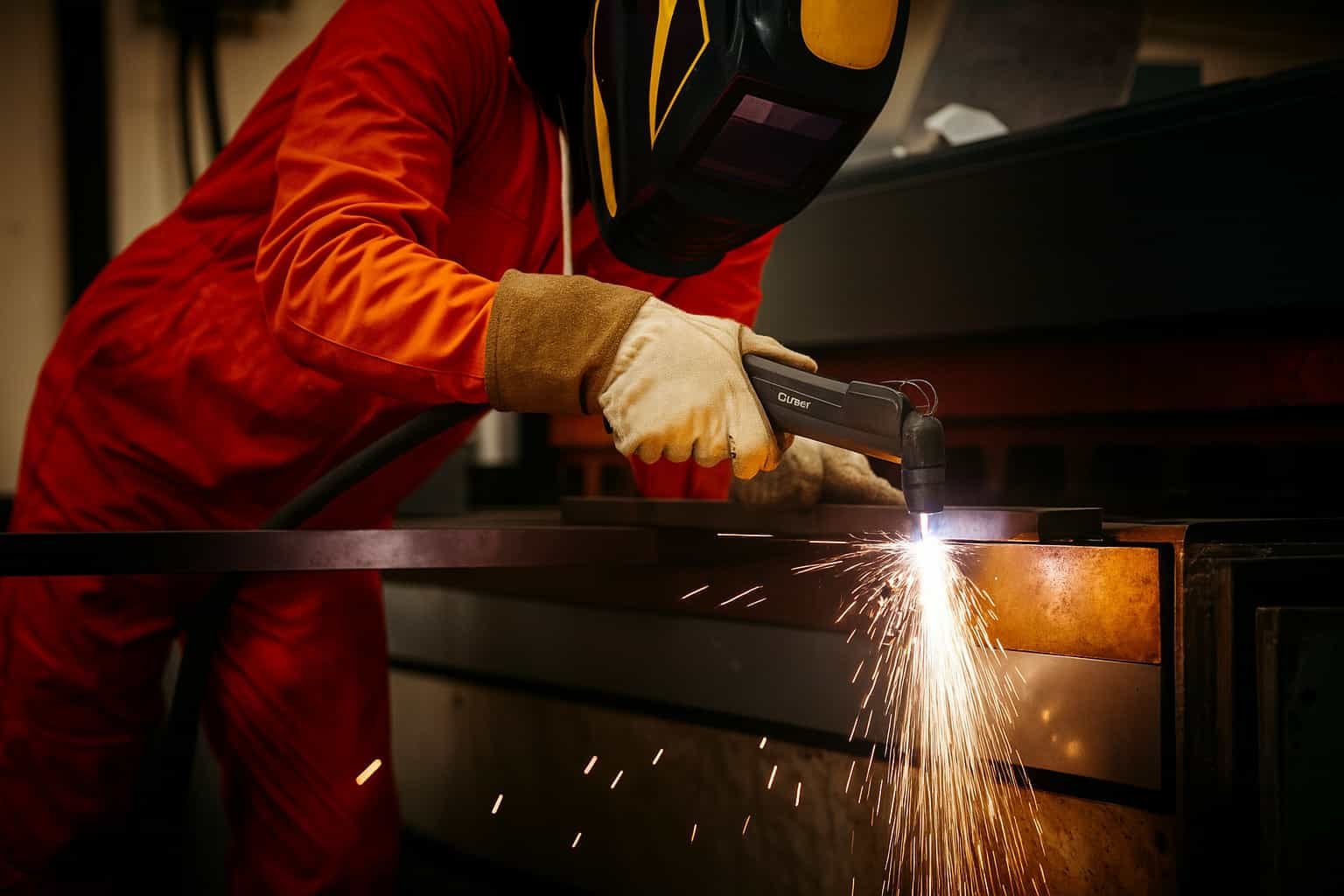
Plasma Cutter:
- Function: Cuts through metals.
- Technology: Uses a high-velocity jet of ionized gas (plasma).
- Materials: Effective on steel, stainless steel, aluminum, brass, and copper.
- Precision: Provides clean and precise cuts.
Welder:
- Function: Joins metals by melting and fusing them.
- Technology: Utilizes electrical current to create an arc that melts metal.
- Materials: Can be used on a variety of metals, depending on the welding method (MIG, TIG, Stick).
- Strength: Creates strong, durable bonds.
In summary, plasma cutters are specialized for precise cutting, while welders are designed for creating strong joints. Both tools are essential in metal fabrication but serve distinctly different purposes.
What Metals Cannot Be Cut with a Plasma Cutter?
Plasma cutters cannot effectively cut non-conductive metals such as aluminum, stainless steel, and titanium. This is due to the plasma cutting process requiring the material to be electrically conductive for the arc to pass through and melt the metal.
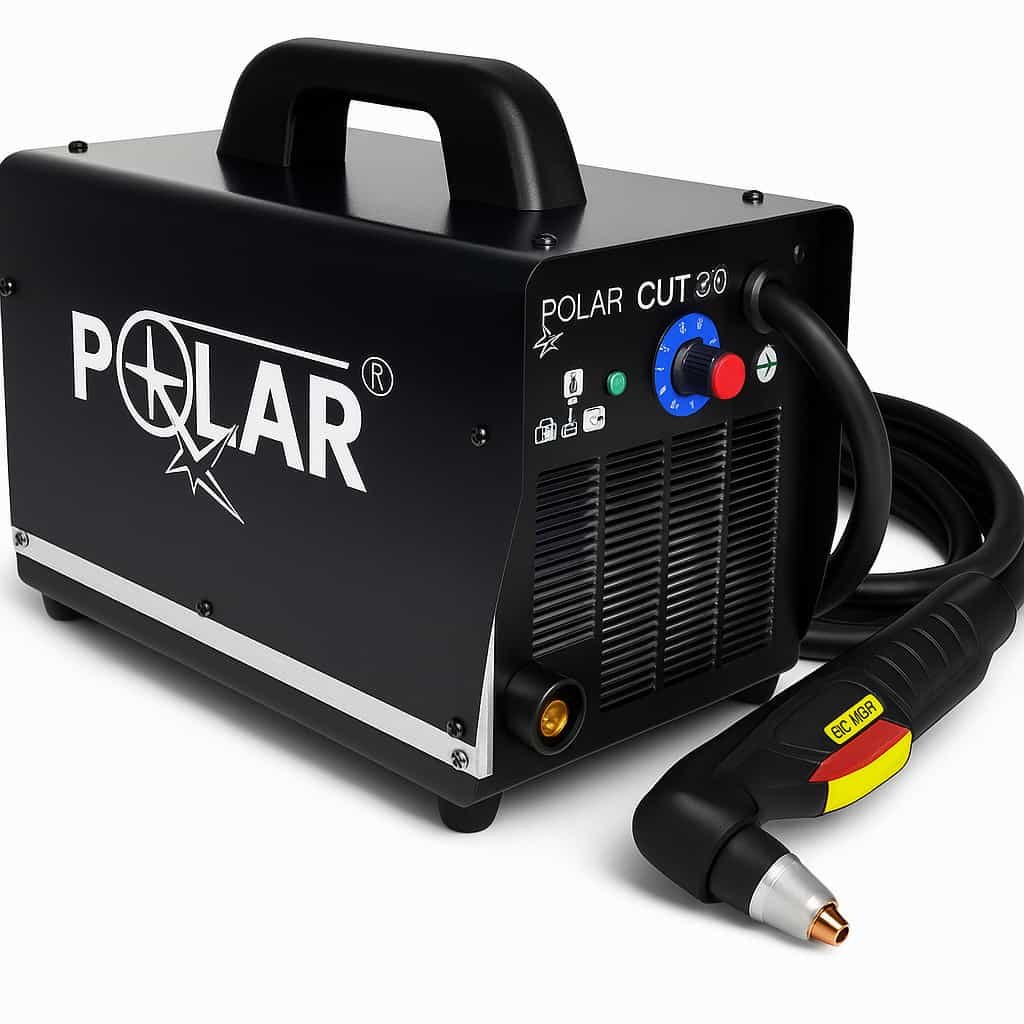
Why Non-Conductive Metals Cannot Be Cut
- Conductivity Requirement: Plasma cutting relies on an electrical arc passing through the material.
- Melting Point: Non-conductive metals may not respond well to the plasma arc, making it difficult to achieve a clean cut.
- Material Composition: Metals like aluminum and titanium have properties that hinder the plasma arc, causing issues in cutting.
Key Points
- Plasma cutting is ideal for electrically conductive materials.
- Non-conductive metals present challenges due to their unique properties.
- Ensuring the material’s conductivity is crucial for effective plasma cutting.
By understanding these limitations, one can select the appropriate cutting method for different types of metals.
Are Plasma Cutters AC or DC?
Plasma cutters typically use DC (Direct Current) for cutting operations. This is because DC provides a more stable and concentrated arc, which is essential for precision and efficiency in cutting metals.
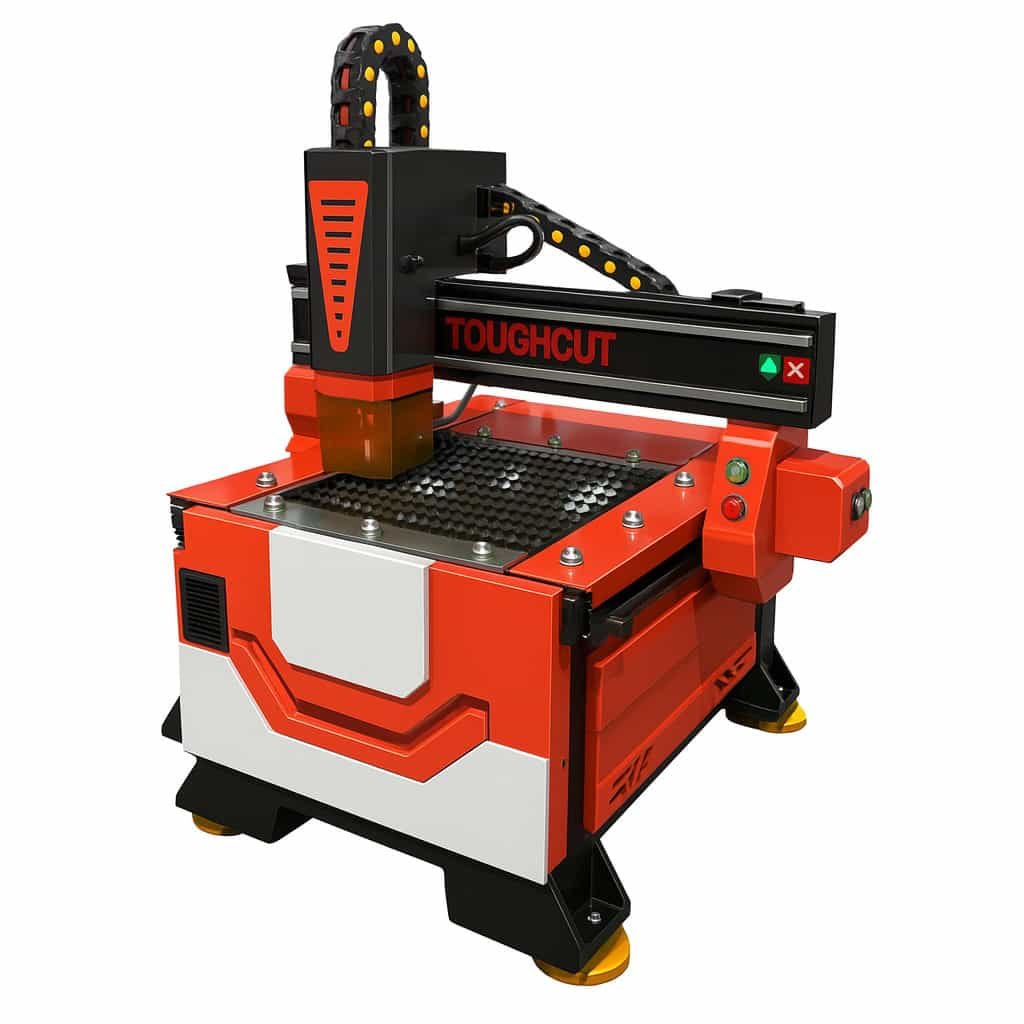
How Plasma Cutters Work
- Ionization: A high-frequency electric current ionizes a gas (like oxygen, nitrogen, or argon) to create plasma.
- Arc Formation: The ionized gas forms an arc between the electrode (negative) and the workpiece (positive).
- Cutting: The intense heat from the plasma (up to 25,000°C) melts the metal, while the high-velocity gas blows away the molten material, creating a clean cut.
Key Points
- DC Power: Direct Current is used because it ensures a stable and concentrated arc.
- Efficiency: DC plasma cutters are more efficient and provide better control for precision cutting.
- Safety: Modern plasma cutters incorporate safety features to handle the high currents and temperatures involved.
In summary, plasma cutters use DC for their operations due to the stability and precision it offers in cutting various metals.

